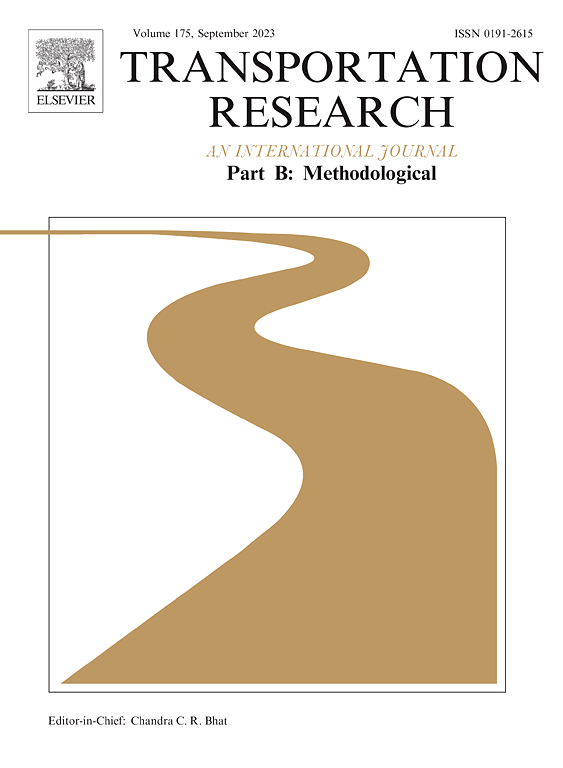机器学习技术嵌入参考依赖选择模型,提高解释力:参考点转移是车辆购买决策的关键因素
IF 5.8
1区 工程技术
Q1 ECONOMICS
引用次数: 0
摘要
机器学习是一种强大的工具,有可能提高选择模型解释消费者行为的能力。虽然以真实决策过程为重点开发的参考依赖选择模型在解释能力和可解释性方面比一般离散选择模型更具优势,但在如何设定参考点方面仍缺乏共识。目前,常见的做法是设计一个基于参考点的效用方程,在过去经验、现状和未来预期之间任意选择一个作为参考点。然而,由于个体消费者与研究者在如何设定参考点上可能存在差异,目前的方法对于理解消费者的选择行为相当有限。因此,本研究提出了一种新方法,通过使用 ANNs(人工神经网络)转移个体参考点,从而更准确地理解消费者的选择行为。分析结果表明,与离散选择模型和现有的参考依赖选择模型相比,本研究提出的模型具有更好的解释力。这意味着研究人员通常设定的参考点通过人工神经网络近似于每个人的实际参考点。这项研究的意义在于,它证实了在车辆选择中几个参考价格替代候选模型中模型拟合度最高的当前状态可能并不能作为实际参考价格,同时还提出了一个基础框架,用于识别每个消费者的真实参考价格。此外,它还能为基于消费者偏好分析的企业战略和政府政策建议做出贡献,因为在这种分析中需要较高的解释力。本文章由计算机程序翻译,如有差异,请以英文原文为准。
Amachine learning technique embedded reference-dependent choice model for explanatory power improvement: Shifting of reference point as a key factor in vehicle purchase decision-making
Machine learning is a powerful tool with the potential to improve a choice model's ability to explain consumer behavior. Although the reference-dependent choice model, developed with an emphasis on real decision-making processes, has an advantage over general discrete choice models in terms of explanatory power and interpretability, there is still a lack of consensus on how the reference point should be set. Currently, the common practice is to design a reference point-based utility equation to make an arbitrary decision between past experience, the status quo, and future expectations as the reference point. However, as individual consumers may differ from researchers in how they set their reference points, the current method is rather limited for understanding consumer choice behavior. Therefore, this study proposes a new approach to more accurately understand consumer choice behavior by shifting individual reference points using ANNs (Artificial Neural Networks). The analysis results show that the model proposed in this study has better explanatory power than both the discrete choice model and the existing reference-dependent choice model. This implies that the reference point typically set by researchers approximates each individual's actual reference point through artificial neural networks. This study is significant in that it confirms the possibility that the current status, which showed the highest model fit among several reference price proxy candidates in vehicle choice, may not function as the actual reference price, while also proposing a foundational framework for identifying each consumer's true reference price. Furthermore, it can contribute to corporate strategies and government policy recommendations based on consumer preference analysis, where high explanatory power is required.
求助全文
通过发布文献求助,成功后即可免费获取论文全文。
去求助
来源期刊
CiteScore
12.40
自引率
8.80%
发文量
143
审稿时长
14.1 weeks
期刊介绍:
Transportation Research: Part B publishes papers on all methodological aspects of the subject, particularly those that require mathematical analysis. The general theme of the journal is the development and solution of problems that are adequately motivated to deal with important aspects of the design and/or analysis of transportation systems. Areas covered include: traffic flow; design and analysis of transportation networks; control and scheduling; optimization; queuing theory; logistics; supply chains; development and application of statistical, econometric and mathematical models to address transportation problems; cost models; pricing and/or investment; traveler or shipper behavior; cost-benefit methodologies.

 求助内容:
求助内容: 应助结果提醒方式:
应助结果提醒方式:


